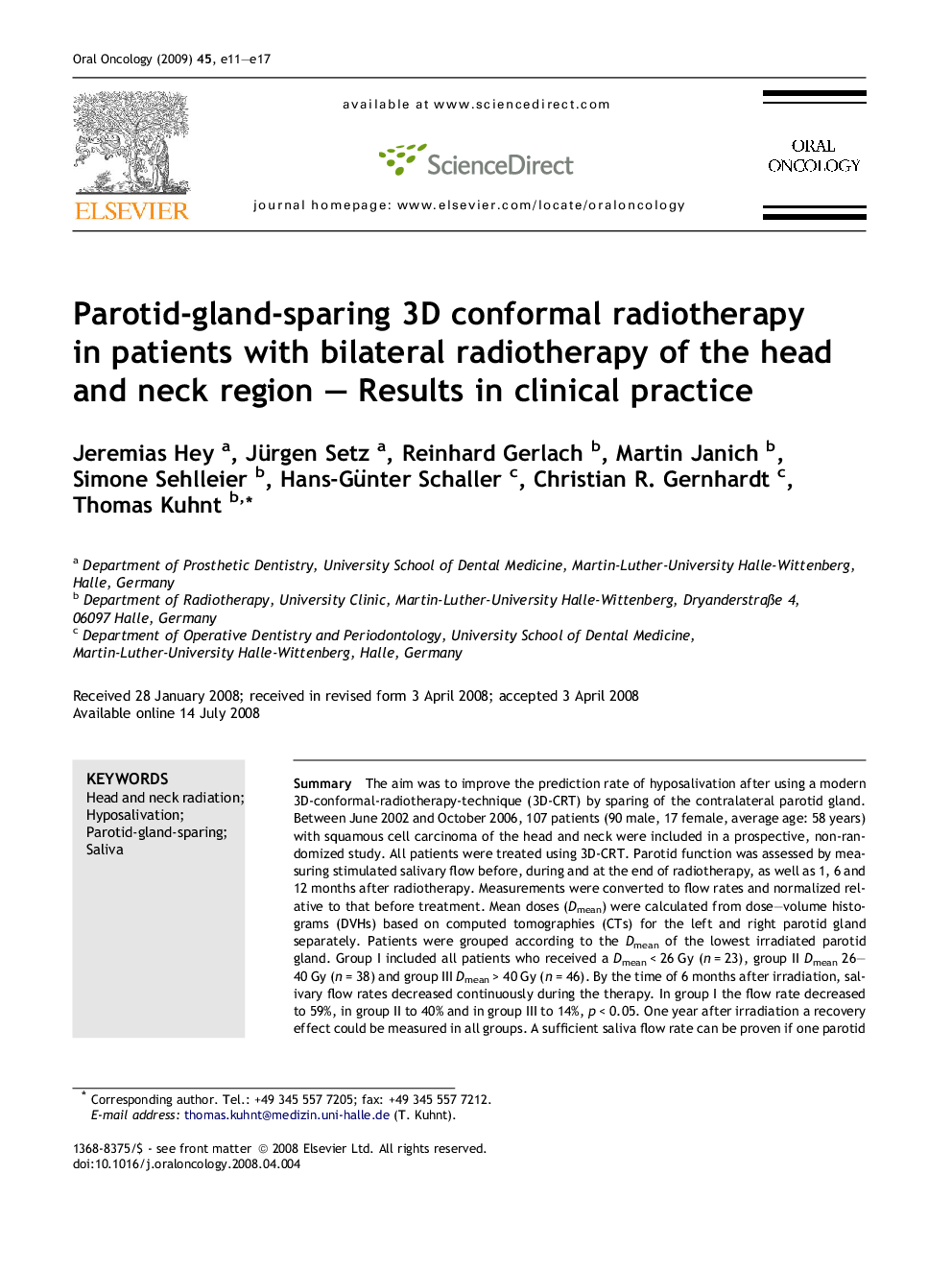| Article ID | Journal | Published Year | Pages | File Type |
|---|---|---|---|---|
| 3165464 | Oral Oncology | 2009 | 7 Pages |
Abstract
The aim was to improve the prediction rate of hyposalivation after using a modern 3D-conformal-radiotherapy-technique (3D-CRT) by sparing of the contralateral parotid gland. Between June 2002 and October 2006, 107 patients (90 male, 17 female, average age: 58 years) with squamous cell carcinoma of the head and neck were included in a prospective, non-randomized study. All patients were treated using 3D-CRT. Parotid function was assessed by measuring stimulated salivary flow before, during and at the end of radiotherapy, as well as 1, 6 and 12 months after radiotherapy. Measurements were converted to flow rates and normalized relative to that before treatment. Mean doses (Dmean) were calculated from dose-volume histograms (DVHs) based on computed tomographies (CTs) for the left and right parotid gland separately. Patients were grouped according to the Dmean of the lowest irradiated parotid gland. Group I included all patients who received a Dmean < 26 Gy (n = 23), group II Dmean 26-40 Gy (n = 38) and group III Dmean > 40 Gy (n = 46). By the time of 6 months after irradiation, salivary flow rates decreased continuously during the therapy. In group I the flow rate decreased to 59%, in group II to 40% and in group III to 14%, p < 0.05. One year after irradiation a recovery effect could be measured in all groups. A sufficient saliva flow rate can be proven if one parotid gland is spared with a Dmean dose <26 Gy. Approximately, one quarter of the participants showed a significant improvement.
Keywords
Related Topics
Health Sciences
Medicine and Dentistry
Dentistry, Oral Surgery and Medicine
Authors
Jeremias Hey, Jürgen Setz, Reinhard Gerlach, Martin Janich, Simone Sehlleier, Hans-Günter Schaller, Christian R. Gernhardt, Thomas Kuhnt,
